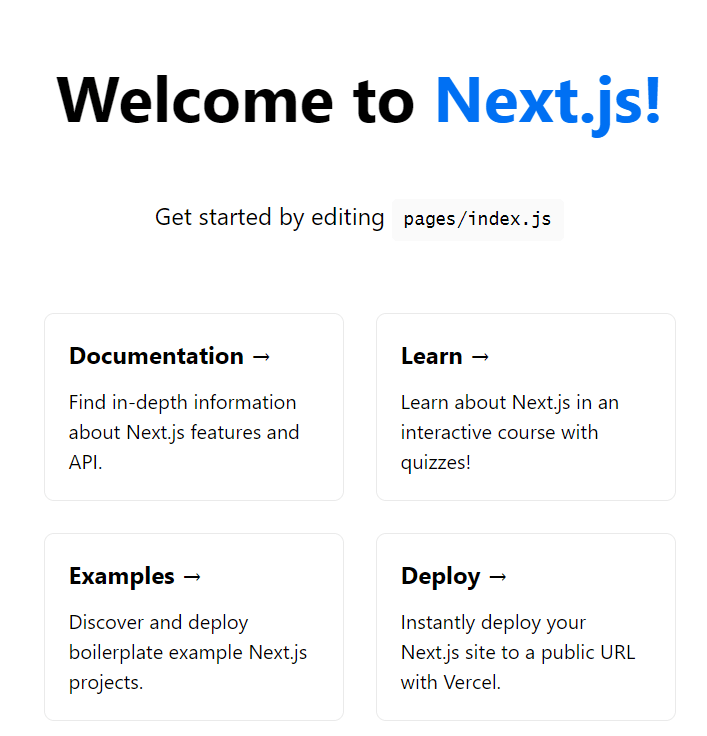How To Install Next.js on Fedora 41

Next.js is a powerful React framework that enables developers to build server-rendered applications with ease. It comes packed with features such as static site generation, server-side rendering, and API routes, making it a popular choice for modern web development. This article will guide you through the process of installing Next.js on Fedora 41, ensuring you have a solid foundation to start building your applications.
Understanding the Prerequisites
Before diving into the installation process, it’s essential to understand the prerequisites for setting up Next.js on your Fedora system.
What is Node.js?
Node.js is an open-source, cross-platform JavaScript runtime environment that executes JavaScript code outside of a web browser. It is crucial for running Next.js applications since Next.js relies on Node.js to handle server-side logic and build processes. To get started with Next.js, you need to have Node.js installed on your system.
What is npm?
npm, or Node Package Manager, is the default package manager for Node.js. It allows you to install and manage dependencies required for your projects. When you create a Next.js application, npm will help you manage the libraries and tools necessary for development.
Why Use nvm?
Using Node Version Manager (nvm) allows you to easily switch between different versions of Node.js. This flexibility is particularly useful when working on multiple projects that may require different versions of Node. Installing nvm simplifies the management of Node.js versions and ensures compatibility with your applications.
Installing Node.js on Fedora 41
Now that you understand the prerequisites, let’s proceed with installing Node.js on Fedora 41.
Using DNF to Install Node.js
The simplest way to install Node.js on Fedora is through the DNF package manager. Follow these steps:
-
- Open your terminal.
- Update your package repository:
sudo dnf update-
- Install Node.js:
sudo dnf install nodejs-
- Verify the installation by checking the version:
node -vInstalling Node.js via NodeSource
If you need a specific version of Node.js, you can use the NodeSource repository. Here’s how:
-
- Add the NodeSource repository (replace `setup_20.x` with your desired version):
curl -fsSL https://rpm.nodesource.com/setup_20.x | sudo bash --
- Install Node.js:
sudo dnf install nodejs-
- Check the installed version:
node -vInstalling Node.js Using nvm
If you prefer to use nvm for managing your Node.js installations, follow these steps:
-
- Open your terminal and download nvm using curl:
curl -o- https://raw.githubusercontent.com/nvm-sh/nvm/v0.39.1/install.sh | bash-
- Activate nvm by adding it to your shell profile (e.g.,
.bashrcor.zshrc):
- Activate nvm by adding it to your shell profile (e.g.,
export NVM_DIR="$HOME/.nvm"
[ -s "$NVM_DIR/nvm.sh" ] && \. "$NVM_DIR/nvm.sh"-
- Close and reopen your terminal or source your profile file:
source ~/.bashrc-
- Install the desired version of Node.js (e.g., 16.x):
nvm install 16-
- Select the installed version:
nvm use 16-
- Verify the installation:
node -vSetting Up Your Next.js Project
Your environment is now ready; let’s set up a new Next.js project.
Creating a New Next.js Application
The easiest way to create a new Next.js application is by using the `create-next-app` command-line tool. Here’s how to do it:
-
- Create a new directory for your project and navigate into it:
mkdir my-next-app
cd my-next-app-
- Create a new Next.js application:
npx create-next-app@latest .This command will prompt you to choose various options such as TypeScript support, ESLint integration, and more. Follow the prompts based on your preferences.
Understanding the Project Structure
Your new Next.js application will have a predefined structure that helps organize files efficiently. Here’s a breakdown of key directories and files:
- `pages/`: Contains all your application’s pages. Each file in this directory corresponds to a route based on its filename.
- `public/`: This folder holds static assets like images and fonts that can be served directly.
- `styles/`: Contains CSS files for styling your application.
- `next.config.js`: Configuration file for customizing various aspects of your Next.js application.
- `package.json`: Lists all dependencies and scripts for building and running your application.
Configuring Your Next.js Application
The default configuration works well for most cases, but you may want to customize certain settings based on your project requirements.
Modifying Configuration Files
You can modify `next.config.js` to customize settings such as enabling experimental features or setting up redirects. Here’s an example configuration:
// next.config.js
module.exports = {
reactStrictMode: true,
images: {
domains: ['example.com'],
},
}
Add Environment Variables
If your application requires sensitive information like API keys, consider using environment variables. Create a `.env.local` file in the root directory of your project and add variables like this:
# .env.local
NEXT_PUBLIC_API_URL=https://api.example.com
SECRET_API_KEY=mysecretkey
Running Your Next.js Application
Your Next.js application is now set up! Let’s run it locally.
Starting the Development Server
You can start the development server using npm or yarn. Run one of the following commands in your project directory:
# Using npm
npm run dev
# Using yarn
yarn dev
Accessing the Application in a Browser
Your application will be accessible at `http://localhost:3000`. Open this URL in your web browser to see your newly created Next.js app in action!

Building and Deploying Your Next.js Application
The final step in preparing your app is creating a production build and deploying it so others can access it online.
Create a Production Build
You can create an optimized production build using npm or yarn with this command:
# Using npm
npm run build
# Using yarn
yarn build
This command generates an optimized version of your application in the `.next` directory.
Starting the Production Server
You can start serving your production build locally with this command:
# Using npm
npm start
# Using yarn
yarn startTroubleshooting Common Issues
If you encounter issues during installation or while running your application, here are some common problems and solutions:
- Error: “Cannot find module”: This error usually indicates that a required package is missing. Ensure you’ve run `npm install` or `yarn install` after creating your project.
- Error: “Port 3000 already in use”: This means another process is using port 3000. You can either stop that process or run your app on another port by modifying the start command like this: `PORT=3001 npm start`.
- Error: “Unexpected token” in JavaScript files: This often occurs due to syntax errors in your code. Check for missing brackets or incorrect imports in your components.
- Error: “Failed to compile”: This indicates there are issues in your code preventing it from compiling correctly. Review any error messages provided in the terminal for guidance on fixing them.
- Error: “Module not found”: This error may occur if you attempt to import a module that isn’t installed or incorrectly referenced. Double-check all import paths and ensure all dependencies are installed correctly.
- Error: “Invalid environment variable”: If you’re using environment variables incorrectly, ensure they are prefixed with `NEXT_PUBLIC_` when accessed from client-side code.
Congratulations! You have successfully installed Next.js. Thanks for using this tutorial for installing Next.js on your Fedora 41 system. For additional help or useful information, we recommend you check the official Next.js website.